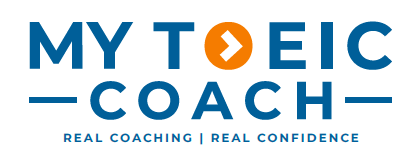Mastering Conditionals for TOEIC: If You Study This, You’ll Score Higher
Conditional sentences — the small “if” structures — are a favourite TOEIC grammar trap.
They look simple, but TOEIC tests whether you understand time logic, real vs unreal situations, and the exact verb sequence that matches the meaning.
🔹 What Are Conditionals?
Conditionals link a condition with a result.
They usually use if, but the key is how the verbs in each part match the time and reality of the situation.
🧩 The Four Main Types
0️⃣ Zero Conditional — Facts and Rules
Structure: If + present simple, present simple
Use: Facts, routines, instructions.
If it rains, the streets get wet.
If you press the green button, the machine starts.
1️⃣ First Conditional — Real Future Possibilities
Structure: If + present simple, will + base verb
Use: Likely future situations; one depends on the other.
If I pass the test, I’ll celebrate tonight.
If the report is late, the manager will be upset.
2️⃣ Second Conditional — Unreal Present or Unlikely Future
Structure: If + past simple, would + base verb
Use: Imaginary situations or unlikely possibilities.
If I had more money, I would travel abroad.
If I were you, I’d ask the supervisor. ✅ (were is the TOEIC-expected subjunctive form)
3️⃣ Third Conditional — Unreal Past
Structure: If + had + past participle, would have + past participle
Use: Imaginary past situations — things that didn’t happen.
If I had studied, I would have passed.
If the team had prepared better, the meeting would have gone smoothly.
🔄 Mixed Conditionals — Combining Timelines
Past condition + present result:
If I had taken that job, I would be in New York now.
🎯 How TOEIC Tests Conditionals
Removes part of the verb: If he ___ known…
Breaks tense sequence: If I know, I would help. ❌
Confuses real vs unreal time: using will in a second conditional.
You’ll often see answer sets like:
A) had
B) will have
C) have
D) would have
Only one matches the time logic.
⚠️ Common Pitfalls
Will in the if-clause → ❌ If he will come… → ✅ If he comes…
Wrong past form: ❌ If she went earlier, she would have caught the train. → ✅ If she had gone earlier…
Forgetting subjunctive were: ❌ If I was taller… → ✅ If I were taller…
🛠 Quick Identification Guide
When you see an if sentence, ask:
Real future? → First Conditional
Unreal present/future? → Second Conditional
Unreal past? → Third Conditional
Timeline mix? → Mixed Conditional
Final Word
Conditionals in TOEIC aren’t about creativity — they’re about precision. Once you can match the verb forms to the timeline and reality, you’ll answer quickly and confidently.
For more strategies and resources to master TOEIC grammar logic, visit the English Library Collection and start locking in conditional accuracy today.

